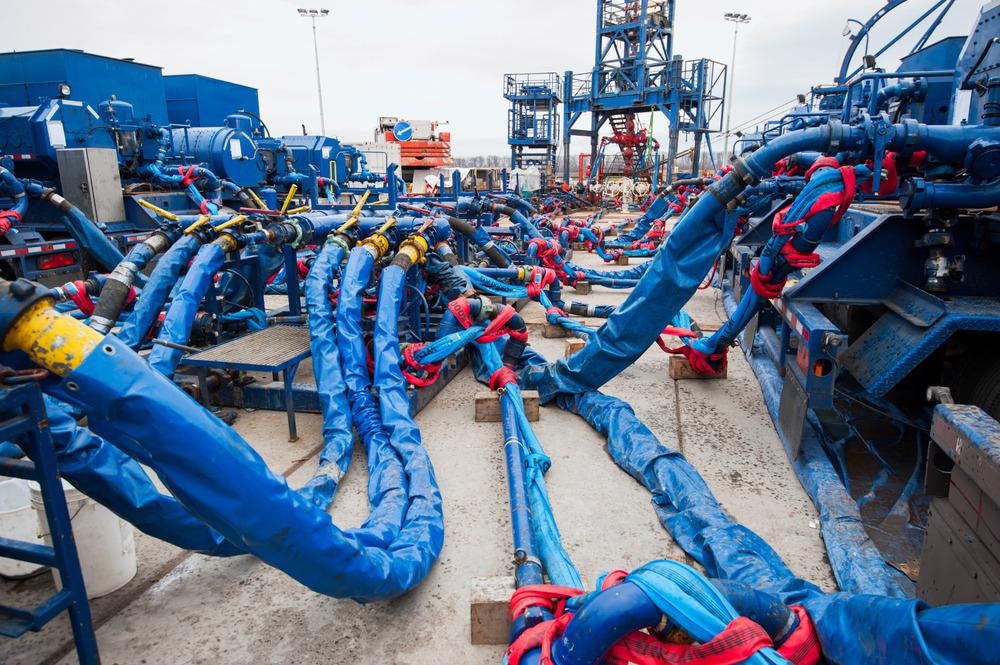As part of AZoOptics’ Industrial Response to Climate Change series addressing some of the issues raised in the latest Intergovernmental Panel on Climate Change (IPCC) report, this article examines methane emissions and their sometimes overlooked impact on the environment. A quantum-enabled gas imaging system that Bristol, UK-based QLM Technology, has developed could help us solve these problems.

Increasing Methane Emissions
Following the release of the IPCC’s latest report, the world’s attention is turning back to the problems caused by greenhouse gases. As well as carbon dioxide (CO2), methane emissions have severe consequences for the health of the world’s ecosystems.
Until around 15 or 20 years ago, global methane emissions had been relatively stable. However, from 2005 they have been steadily rising, and over the last five years, methane emissions have been growing at increasingly faster rates. There is no single cause for this increase, but researchers attribute it to three primary factors:
- An increase in the use of hydraulic fracturing to extract natural gas that correlates with the rise in methane emissions
- Greater global demand for meat and larger populations of animals on farms
- Climate change impacting natural processes, for example, wetlands in the tropics

Image Credit: Yarygin/Shutterstock.com
Methane Emissions Harm the Environment as well as Human Health
While the majority of discussion around greenhouse gas emissions has centered on carbon dioxide, methane emissions are also a significant contributor to climate change. It has a much stronger effect than CO2 on global warming, reported being 84 times more potent. If methane emissions in the atmosphere continue to rise, this will be even more pronounced. In fact, the current concentration of methane needs to halve by 2030 to maintain a rate of warming below 1.5 degrees Celsius.
Reducing methane emissions will have a slow but steady impact on global warming but will almost immediately affect many other health and climate issues. Methane is a precursor of surface ozone, an atmospheric pollutant that is toxic to human health. Reducing the presence of this pollutant can significantly improve air quality as soon as concentrations begin to decrease.
Surface ozone, or ground-level ozone, is a contributing factor in several respiratory illnesses. Child asthma, respiratory system infections, and even chronic obstructive pulmonary disorder can all be caused by breathing poor air polluted with surface ozone. There is also strong evidence to suggest that surface ozone can make heart diseases worse.
It is estimated that one million tons of methane emissions cause 1,430 deaths and 4,000 asthma-related emergencies. Approximately 370 million tons of methane are released every year as a result of human activity.
How Are Methane Emissions Currently Managed?
Many technological solutions in use today work to minimize methane emissions. Often these are cost-effective, as they capture methane that can be converted into gas for energy consumption.
Systems for detecting and capturing methane gas are used in landfills as well as on natural gas infrastructure. They typically rely on complex mirror arrays that reflect laser light through a sample area into a standard gas detector.

Image Credit: Pedal to the Stock/Shutterstock.com
QLM Technology: Quantum-Enabled Gas Imaging
Bristol, UK, based QLM Technology, has developed a new gas imaging camera that identifies and quantifies methane lost through leaks, designed to work at a great distance from the source. QLM Technology is a spinout enterprise from the University of Bristol and is funded by the UK’s Industrial Strategy Challenge Fund to commercialize innovative quantum technology.
The new camera is less time-consuming and more accurate than conventional gas sensors used to detect greenhouse gas leaks, according to QLM. It also uses a single photon avalanche detector, a quantum technology that enables the detection of otherwise invisible material in the atmosphere; its sensitivity also means that gas can be identified without the need for mirrors.
The result of a two-year project, Single Photon Lidar Imaging of Carbon Emissions (SPLICE), this camera continuously detects, quantifies, and models greenhouse gas leaks, notifying facility operators immediately when a leak occurs.
QLM Technology calls their system Tunable Diode Lidar (TDLidar). TDLidar’s features include:
- Long-range
- High sensitivity
- High speed
- Precise mapping of locations and flow rates for gas leaks
It can be used in a fixed setting, mounted on a drone, or handheld.
The Necessity of Measuring Methane to Manage Emissions
The fossil-fuel industry can use technology like this to accurately measure greenhouse gas emissions caused by leaks.
The oil and gas majors have pledged to significantly reduce their methane emissions, but you can’t manage what you can’t measure and no-one is measuring methane properly, continuously, and at scale.
Murray Reed, CEO, QLM Technology
More than 500,000 natural gas wells are active in North America alone, and 24 major pipeline compressor stations are in the UK. Minimizing leaks from this infrastructure could help the fossil fuel industry reduce the amount of environmental damage it causes.
Ultimately, however, there is no sustainable way to consume fossil fuels. Increasing natural gas consumption in any form is incompatible with keeping warming below 1.5 degrees Celsius, regardless of how efficient gas extraction, storage, and distribution is.
QLM Technology’s quantum-enabled gas imaging device will be used to monitor other greenhouse gas emissions. The accurate measurement that it can provide is an essential factor in reducing harmful emissions to net-zero.
--
Industrial Response to Climate Change
This article is a part of the IPCC Editorial Series: Industrial Response to Climate Change, a collection of content exploring how different sectors are responding to issues highlighted within the IPCC 2018 and 2021 reports. Here, Nano showcases the research institutions, industrial organizations, and innovative technologies driving adaptive solutions to mitigate climate change.
References and Further Reading
IPCC. (2018) Summary for Policymakers. Global Warming of 1.5°C. An IPCC Special Report on the impacts of global warming of 1.5°C above pre-industrial levels and related global greenhouse gas emission pathways, in the context of strengthening the global response to the threat of climate change, sustainable development, and efforts to eradicate poverty. Available at: https://www.ipcc.ch/
IPCC. (2021) Summary for Policymakers. Climate Change 2021: The Physical Science Basis. Contribution of Working Group I to the Sixth Assessment Report of the Intergovernmental Panel on Climate. Available at: https://www.ipcc.ch/report/ar6/wg1/downloads/report/IPCC_AR6_WGI_SPM_final.pdf
CCAC and UNEP (2021) Global Methane Assessment. CCAC. [Online]. Available at: https://ccacoalition.org/en/resources/global-methane-assessment-full-report
Fuss, S. et al. (2018) Negative Emissions—Part 2: Costs, Potentials and Side Effects. Environmental Research. Available at: https://doi.org/10.1088/1748-9326/aabf9f
Howarth, R. (2019) Is Shale Gas a Major Driver of Recent Increase in Global Atmospheric Methane? Biogeosciences. Available at: https://doi.org/10.5194/bg-16-3033-2019
Jackson, R. B. (2020) Increasing Anthropogenic Methane Emissions Arise Equally from Agricultural and Fossil Fuel Sources. Environmental Research Letters. Available at:https://doi.org/10.1088/1748-9326/ab9ed2
Photonics World (2021) Leak-detecting Quantum Camera Can Cut Oil and Gas Industry Emissions. Optics.org. [Online] Available at: https://optics.org/news/12/8/26
Shindell, D. (2021) Reducing methane is crucial for protecting climate and health, and it can pay for itself – so why aren’t more companies doing it? The Conversation. [Online]. Available at: https://theconversation.com/reducing-methane-is-crucial-for-protecting-climate-and-health-and-it-can-pay-for-itself-so-why-arent-more-companies-doing-it-160423
QLM Technology Ltd. (2021) Technology Overview - QLM Technology Ltd.. [online] Available at: https://qlmtec.com/
Wolf, J. et al. (2017) Revised Methane Emissions Factors and Spatially Distributed Annual Carbon Fluxes for Global Livestock. Carbon Balance and Management. Available at: https://doi.org/10.1186/s13021-017-0084-y
Disclaimer: The views expressed here are those of the author expressed in their private capacity and do not necessarily represent the views of AZoM.com Limited T/A AZoNetwork the owner and operator of this website. This disclaimer forms part of the Terms and conditions of use of this website.